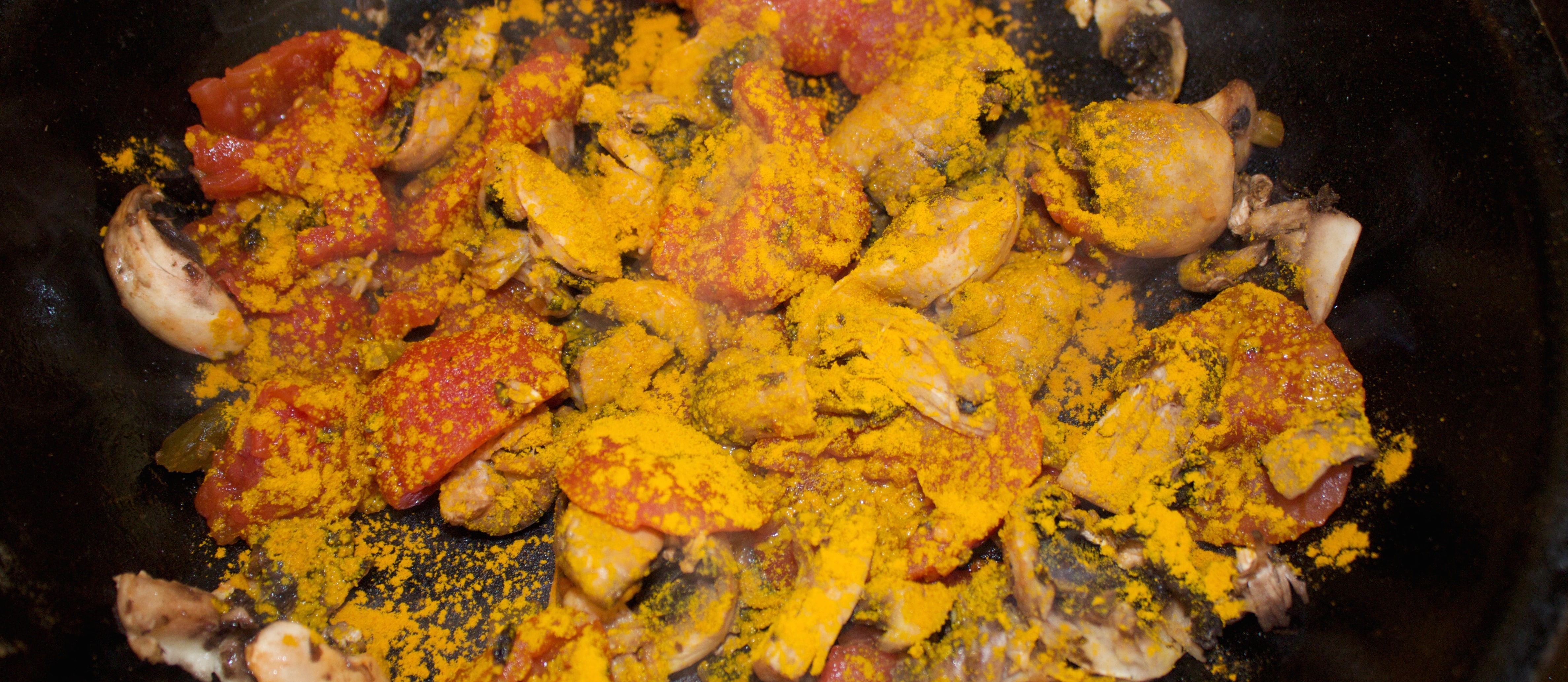In my video Which Spices Fight Inflammation? I profile a landmark study that compared the ability of different spices to suppress inflammation. The study also compared the spices’ ability to protect DNA. Cloves, ginger, rosemary, and turmeric were able to significantly stifle the inflammatory response, but can they also protect DNA?
If a tissue sample is taken from a random person, about 7% of their cells may show evidence of DNA damage, actual breaks in the strands of their DNA. If we then blast those cells with free radicals, we can bring that number up to 10%. But if the person has been eating ginger for a week, DNA damage drops to just 8%. In the video, Spicing Up DNA Protection, you can see a comparison of DNA damage in cells from people eating different spices. Those who hadn’t been eating any herbs or spices were vulnerable to DNA damage from oxidative stress. But just including ginger in our diet may cut that damage by 25%—the same with rosemary.
Turmeric is even more powerful—DNA damage was cut in half. And this was not just mixing turmeric with cells in some petri dish: This is comparing what happens when you expose the cells of spice eaters versus the cells of non-spice eaters to free radicals and count the DNA fracture rates.
And not only did the turmeric work significantly better, but it did so at a significantly smaller dose. One and a third teaspoons a day of ginger or rosemary was compared to practically just a pinch of turmeric (about an eighth of a teaspoon a day)—that’s how powerful the stuff is. I encourage everyone to cook with this wonderful spice. It tastes great and may protect every cell in our body, with or without the added stress. Counting the DNA breaks in people’s cells before and after a week of spices without the free radical blast revealed no significant intrinsic protection in the ginger or rosemary groups. However, the turmeric still appeared to reduce DNA damage by half.
This may be because curcumin is not just an antioxidant—it also boosts the activity of the body’s own antioxidant enzymes. Catalase is one of the most active enzymes in the body: each one can detoxify millions of free radicals per second. If we consume the equivalent of about three quarters of a teaspoon of turmeric a day, the activity of this enzyme in our bloodstream gets boosted by 75%!
I suggest cooking with it rather than, for example, just throwing it in a smoothie. Why? Because this effect was found specifically for heat-treated turmeric. In practice, many herbs and spices are only consumed after cooking, so the researchers tested turmeric and oregano in both raw and cooked forms. In terms of DNA damage, the results from raw turmeric did not reach statistical significance. However, the opposite was found for its anti-inflammatory effects. So we might want to eat it both ways.
“Practical recommendations for obtaining curcumin in the diet might be to add turmeric to sweet dishes containing cinnamon and ginger.” I add it to my pumpkin pie smoothies (a can of pumpkin, frozen cranberries, pitted dates, pumpkin pie spice and some nondairy milk). We can also cook with curry powder or turmeric itself. The researchers suggest something called “turmeric milk,” which is a traditional Indian elixir made with milk, turmeric powder, and sugar. I’d suggest substituting a healthier sweetener and a healthier milk. Soy milk, for example, might have a double benefit. If you’re taking turmeric to combat inflammation, osteoarthritis sufferers randomized to soy protein ended up with significantly improved joint range of motion compared to dairy protein.
For some other extraordinary benefits of spices, see:
- Benefits of Fenugreek Seeds
- Cayenne Pepper for Irritable Bowel Syndrome and Chronic Indigestion
- Saffron for the Treatment of PMS
- Saffron for the Treatment of Alzheimer’s
There are a few herb and spice caveats. See, for example:
-Michael Greger, M.D
